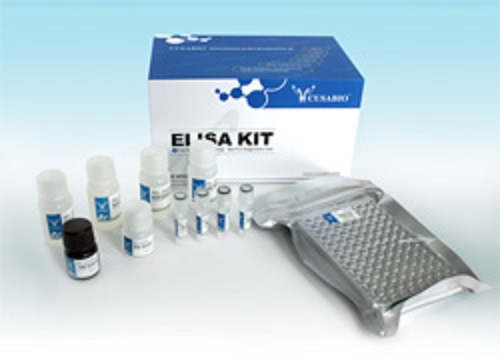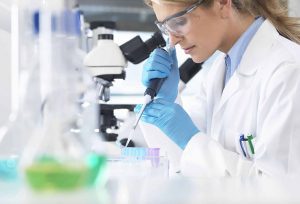Elisa 96 well microplate is a flat plate with multiple wells that can be used as small test tubes. This plate is commonly used as the standard tool for performing analytical research and clinical diagnostic testing in laboratories. Generally, a microplate consists of 6, 12, 24, 48, 96, 384, or 1536 sample wells arranged in a 2:3 rectangular matrix. The wells present in these microplates can either be circular or square and can hold tens of nanolitres to several milliliters of liquid sample. Presently, microplates are seen for life science research, which involves filtration, separation, optical detection, storage, reaction mixing, cell culture, and detection of antimicrobial activity.
These days, microplates are commonly used for the enzyme-linked immunosorbent assay (ELISA), as the modern medical diagnostic testing equipment for humans and animals. Among various options of sample wells available for the plates, the ELISA 96 well microplate has become the standard for the industry and is used globally for performing various tests. The ELISA 96-well microplates allow performing the common laboratory testing procedure that can be carried out on multiple samples at once. ELISA tests are the standard tests used for analyzing the protein mixture and helps in confirming the presence of the target protein. This test is also increasingly used in laboratories for analyzing blood samples.
Moreover, performing experimental assays with a 96-well plate requires a series of washes. Using 96 well microplate washer controls the procedure of washing experimental samples collected on the microplate formats. Compared to manual washing alternatives, the microplate washers help improve the speed and accuracy of washing procedures and are useful for the proper conduct of Enzyme-Linked Immunosorbent Assays (ELISA). There are suitable microplate washers for every lab’s requirements, from handheld washers to fully automated microplate washing.
So, while selecting the 96-well microplates for the ELISA test, one should consider the requirements of the plate reader and the detection method. Although most of the microplates manufacturing these days follow all the universal standards, it is good to check the specification and make sure that they are compatible with your reader and reagents.
Enhance accuracy, sensitivity, and specificity with ELISA 96-well microplates by Optofluidic Bioassay
Optofluidic Bioassay brings a way out for the researchers for conducting the ELISA test at less cost and faster testing times, making the lab more efficient. The Microfluere 96-well plate by Optofluidic Bioassay can conduct ELISA assay with 80% fewer reagents, sample size (20uL vs. 100uL), and five times faster assay time, i.e., less than 1 hour. This microplate is more compatible than the UV star 96-well microplate, 96-well black polystyrene microplate, and 96 well EIA/RIA assay microplate. It can be used well by the standard microplate readers and works for both fluorescence and chemiluminescence detection modes. Using our Microfluere 96-well ELISA microplates helps get more specific results instead of the traditional 96-well ELISA microplate.
We are the leading suppliers for the high-quality and high-performing 96-well plate coated with a mouse anti-Human Interleukin-6 (IL-6 monoclonal antibody) for diagnostic assays. Our microplates are the ideal solution for the biochemical and cell-based assays performed to identify and quantify the protein species. Store these Microfluere well microplates by Optofluidic Bioassay at 4℃ and protect them from prolonged exposure to light for up to 6 months from the date of receiving.




